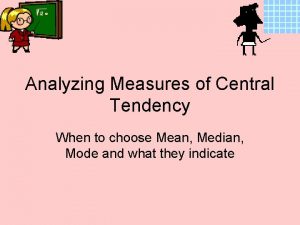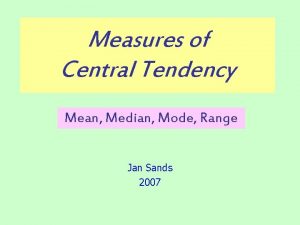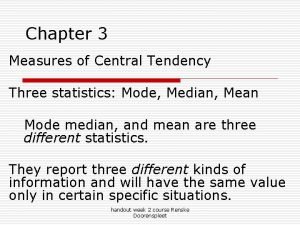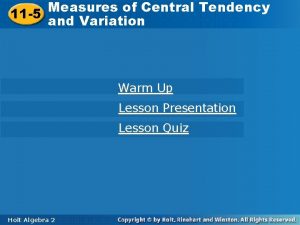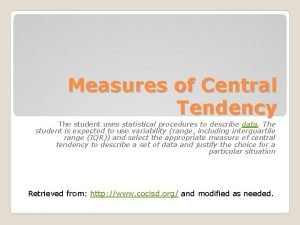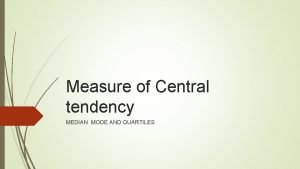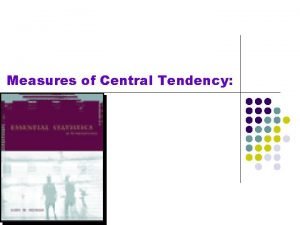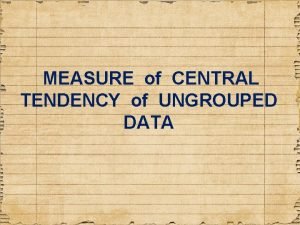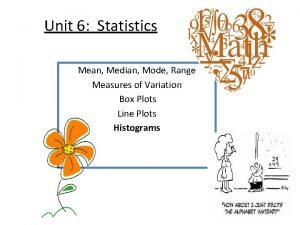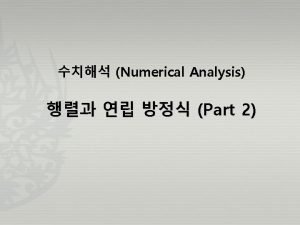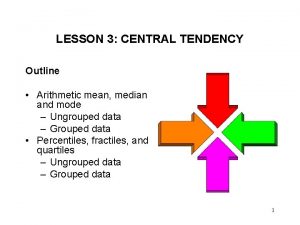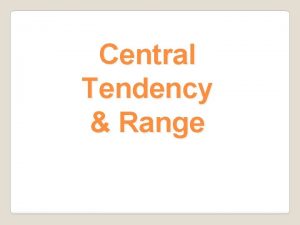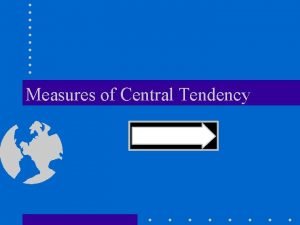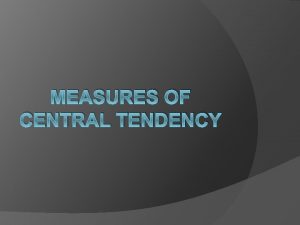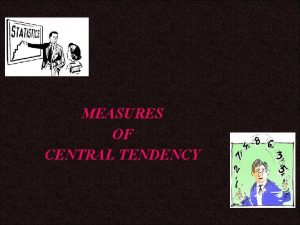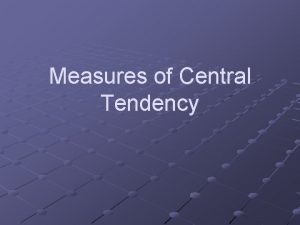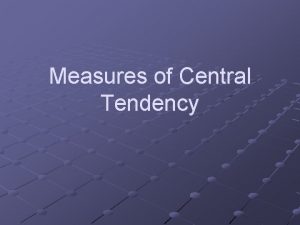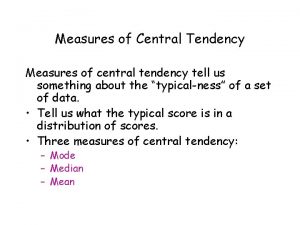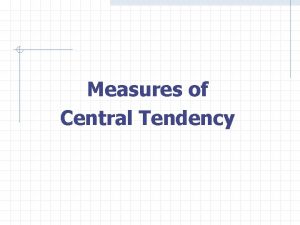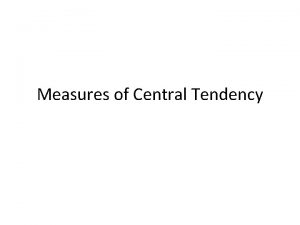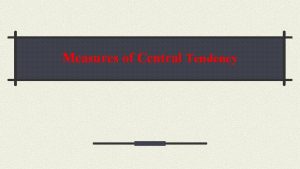Analyzing Measures of Central Tendency When to choose











- Slides: 11

Analyzing Measures of Central Tendency When to choose Mean, Median, Mode and what they indicate

Measures of Central Tendency • These are statistical terms that try to find the “center” of the numbers that are in a group of data. • Mean – average • Median – middle • Mode – most common or most popular • Outlier – a number in a set of data that is much bigger or smaller than the rest of the numbers

Analysis of Mean • What you can determine from the mean – – if numbers are above or below the mean. this measure can be drastically affected by the addition or deletion of numbers to the data • What you cannot determine – – if there were any outliers – outliers will substantially distort the data either too high or too low. what individual scores were • This is usually the best choice to describe data unless there is an outlier.

Analysis of Median • What you can determine from the median – if numbers are above or below the halfway point. – this measure is the least affected measurement if new numbers are added to the data • What you cannot determine – – if there were any outliers what individual scores were • This is usually the best choice to describe data if there is an outlier.

Analysis of Mode • What you can determine from the mode - Which number or numbers are the most frequently • What you can’t determine from the mode - Where the number is in the group of data - What all the other numbers are • This is usually the best choice to describe data if you want to select the most popular value or item.

Analysis of Range • What you can determine from the range - How far apart the numbers are • What you can’t determine from the range - What the numbers are in the data set • This is usually the best choice to describe data if you want to know the spread of the data.

Choosing the best Measure of Central Tendency (worksheet – for homework) 1. A retail store had total sales of $436, $650, $530, $500, $650, $489, and $423 last week. Which measure of data would make the store’s sales last week appear the most profitable? Explain.

2. The heights of 5 starting players on the basketball team are 75 in. , 74 in. , 73 in. , 70 in. , and 68 in. Decide whether the mean describes the data well. Explain.

3. The monthly car payments for Brandon’s last 8 customers were $266, $285, $315, $325, $344. Decide whether the mode describes this data well. Explain.

4. At the end of the winter, the seven sweaters left in stock at Griselda’s Outlet Store were brown, orange, green, orange, brown, orange and orange. Decide which measure of central tendency is appropriate for this data. Explain.

5. The profits at 5 schools that sold Gems & Jewels products were $318. 22, $440. 79, $607. 16, $1090. 38, $4790. 15. Decide whether the mean or median is the better measure of central tendency for this data. Explain.
 Central tendency worksheet
Central tendency worksheet Range in central tendency
Range in central tendency Statistics chapter 3 measures of central tendency
Statistics chapter 3 measures of central tendency Measures of central tendency and variation
Measures of central tendency and variation Mean median mode for grouped data
Mean median mode for grouped data Measures of central tendency
Measures of central tendency In quartiles central tendency median is
In quartiles central tendency median is Central tendency
Central tendency Measures of central tendency of ungrouped data
Measures of central tendency of ungrouped data Unit 6 review #2 - measures of central tendency
Unit 6 review #2 - measures of central tendency Lu 분해 예제
Lu 분해 예제 Formula of mean
Formula of mean
